Mono TDA7056B Speaker with Bluetooth and White Noise
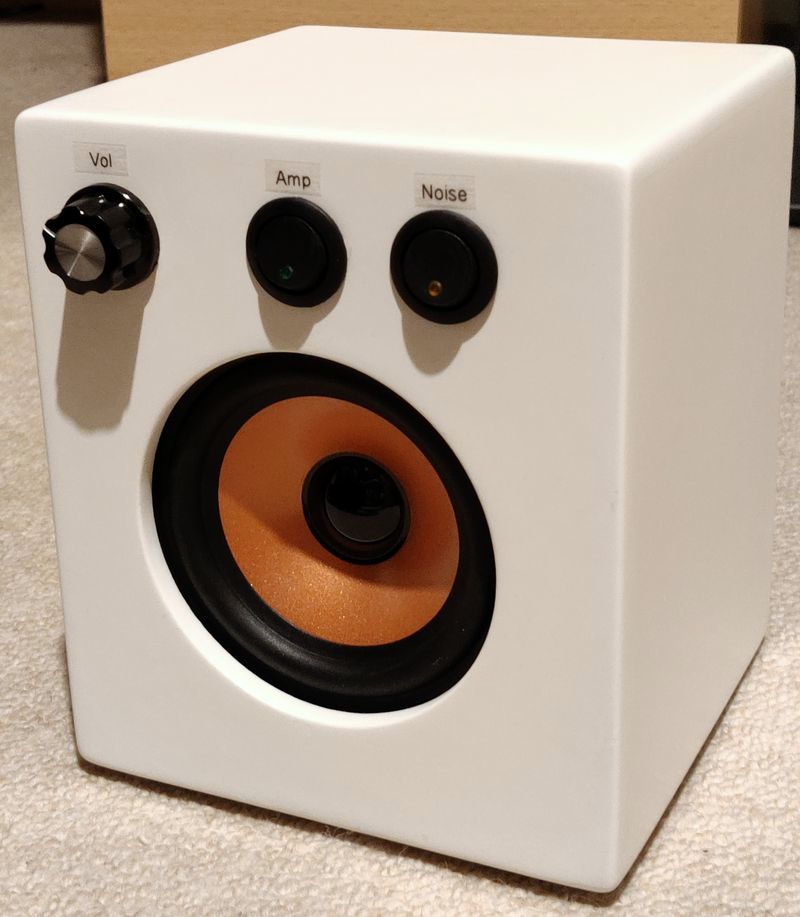
A while ago I blogged about building a White Noise Genenator per ESP Project 182.
I also added an article about the TDA7056B really simple power amplifier.
Initially I used these two hocked up to an old speaker, but I wanted to combine the projects into one single speaker, with the capability to connect any other source to it, such as audio players, laptops or smartphones.
The plan was to have the White Noise generator internal to the speaker, but also allow this to be powered on/off individually with a line out for feeding the white noise in to an external system/amplifier should I ever want to.
The TDA7056B amplifier could also be powered on individually so the amp/speaker can be an output for any audio source I wish to connect
To keep the project small, I intended to use a 4 inch speaker but after realising I didn't have a holesaw that was the right diameter for 4 inch speakers I settled on a 3.5 inch speaker. Both speakers were ordered from China since places selling small speaker drivers in the UK are hard to find - hence the long delay on this build because it took 2 months for the first speaker to arrive, and then another 2 months for the smaller one after I changed my mind!
Given the box is small, I also built a mono bass boost circuit to lift the low end and make the speaker sound a bit warmer.
Both speakers I ordered do not have Thiele-Small parameters and I intended the box to be the smallest size required to house the components, so this is not a high quality build and definitely not Hi-Fi - I just built a non-ported box and put the speaker in. It sounds ok though and perfectly suitable for a utility speaker. I might add a small port later though, as it actually sounds a little better with the back off! Well, more bass and volume anyway, but also pretty hollow :-)
The box is built from thin 9mm MDF. As it's so thin, it's not screwed together and to assemble it I used square plywood edging which I glued on to the two sides first, before gluing all four sides together whilst holding held it to dry carefully and patiently, assisted by an elastic band as I don't have clamps (picture below is a test, I straightened it further when gluing). The front was then glued on after. It feels pretty strong, but probably won't survive me standing on it.
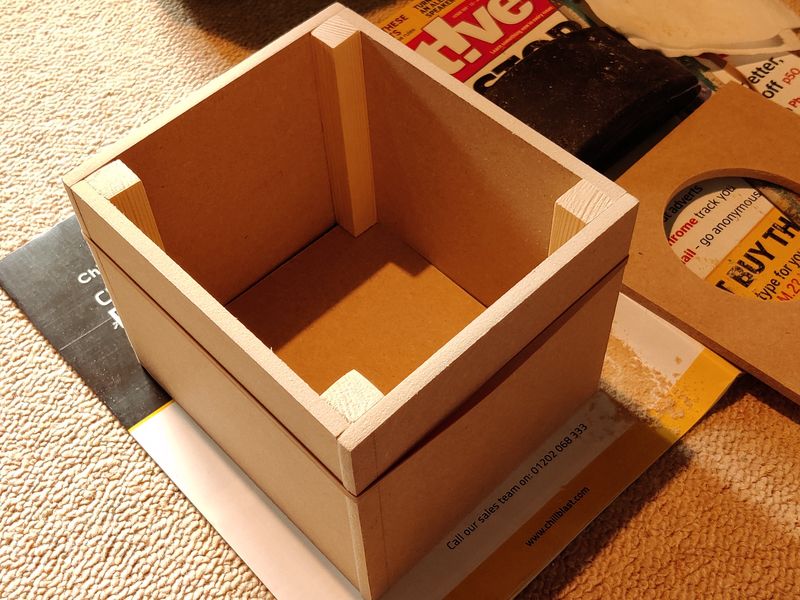
The MDF was then sanded smooth, side corners rounded. I then used Rustins Quick Drying MDF Primer to seal it. This required many coats and sanding to get a smooth finish.

This was followed by several coats of Plasticote Gloss White spray paint, again smoothed with sandpaper once dried and finally Hycote clear lacquer for protection. As it was winter outside, I did this inside, using a used test setup in my workshop bedroom.
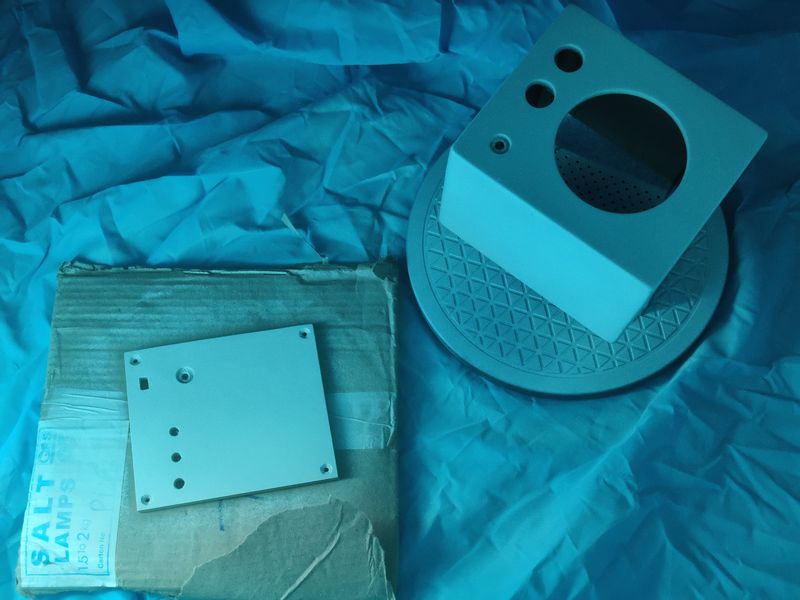
For a small project, again I spent hours on finishing it, and it's not even perfect, but looks good and it's a technique worth practicing that I may one day use to build a proper set of speakers.
Building a DIY Bluetooth audio solution would be tricky to do, so I opted to use one of the cheap Chinese modules (XY BT MINI). It works well, but unless you do a really good job with grounding it will introduce some noise when active and you are powering both the module and the amplifier with the same power supply.
I did originally use an MP1584 buck step down convertor and an audio 1:1 transformer on the output, but there was still some noise, so I used one of my isolated 12V to 5V power supplies - the Traco Power TBA1211. Other alternatives exist, but below is a stripboard layout for a PSU that uses this module and also provides some overvoltage/reverse polarity protection.
The schematic of this PSU and details are in my previous blog. With this PSU, the Bluetooth module is now silent.
The 5V part of the PSU is switched on/off separately by sending the +12V through a 4 pole 3 way rotary switch. This switch allows me to switch the input source between white noise, external line in or Bluetooth. Each L/R signal and ground are switched, and for the Bluetooth the +12V is also switched, making use of all 4 poles. This allows the Bluetooth module to be powered off when using other inputs.
One slight weakness is it also allows the Bluetooth module to be powered on, even when the amplifier is not. I would have had to complicate the PCB layout for that as I could not switch just the 12V input as that would mean I could not separately power on the white noise generator (which has a 12V input). To make it a bit more obvious that the module is operating, I desoldered the onboard LED and messily wired an external one from the parts bin (which is probably 30 years old) in its place.
Below are a couple of pictures of the inside, and the overall result.
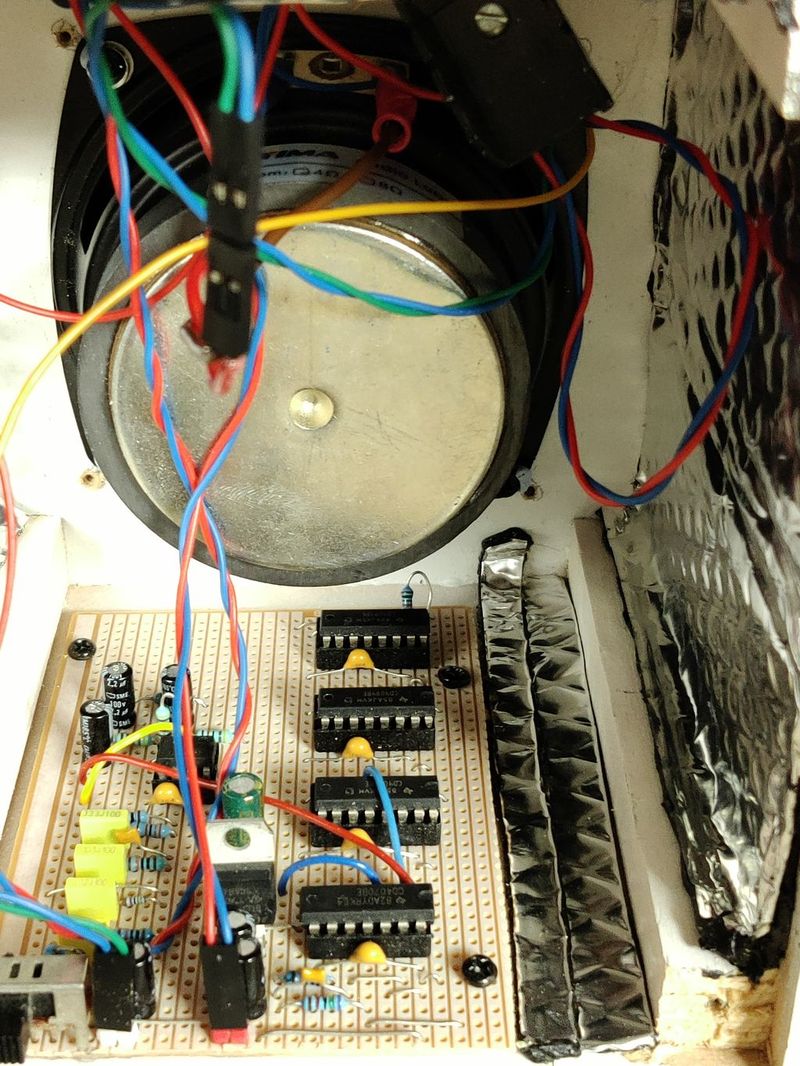
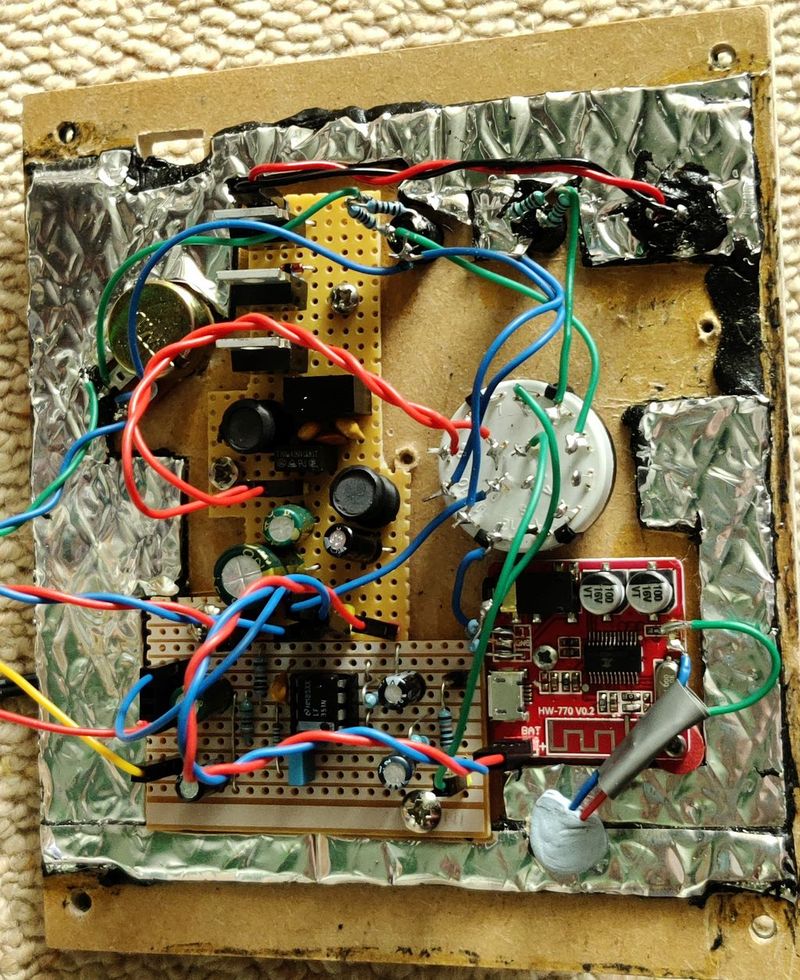
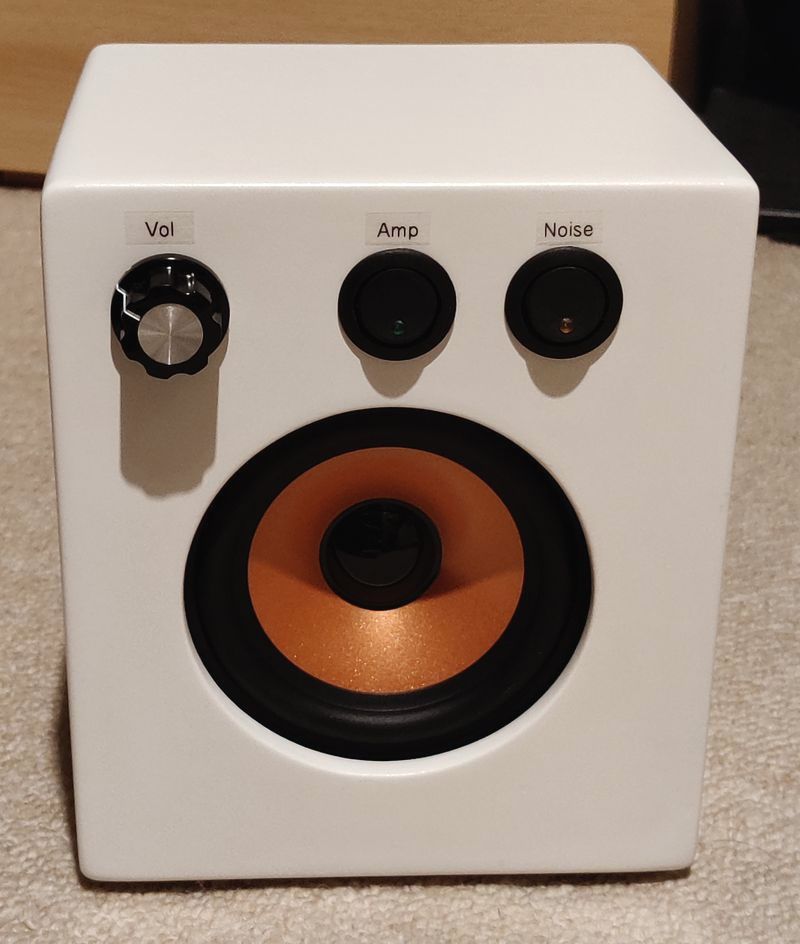
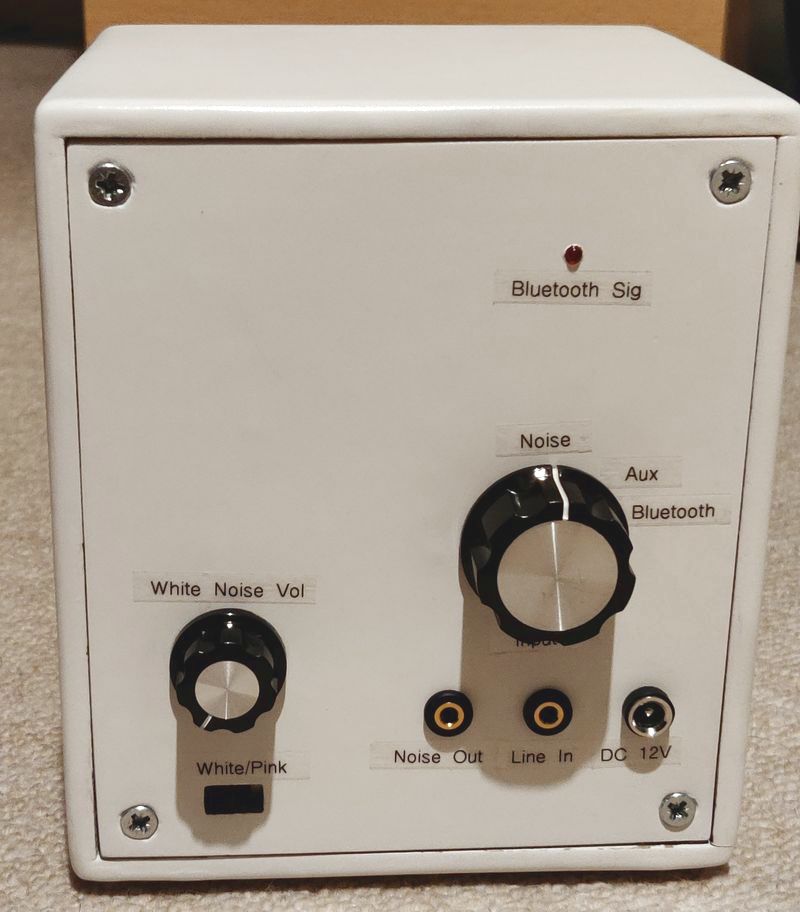
Update 11th May 2022
Cheap 18x37mm reflex port off eBay came from China before I expected, so quickly drilled a 16mm hole and widened with a ronded needle file, and tapped it in. Definitely an improvement in sound. I'm quite pleased with the speaker and port upgrade. Lacks a little treble which a tweeter would fix, but I don't have room for one so it will do.
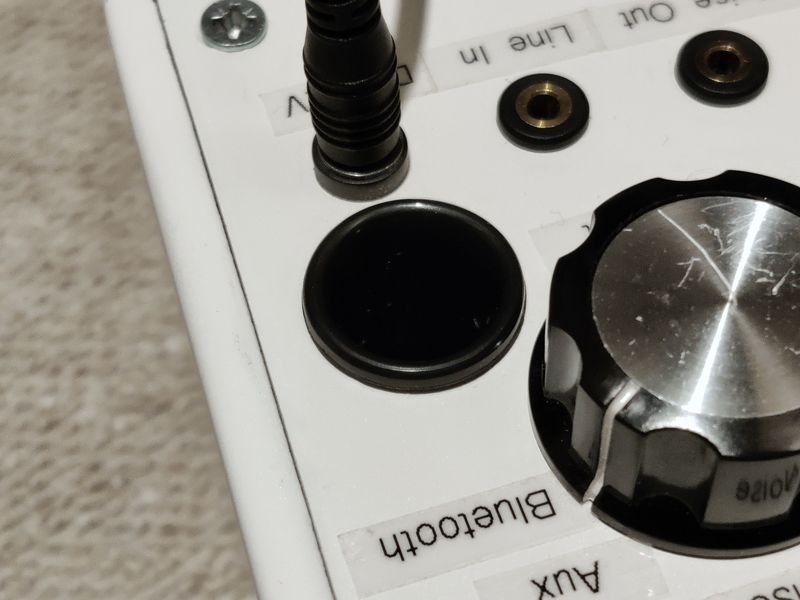
The speaker by the way is off AliExpress "AIYIMA 2PC 3.5Inch Hifi Full Range Stereo Speaker Driver 4Ohm 20W". Price is reasonable and they come in a pair so the other one is just a spare for now. It did take months to arrive though.
